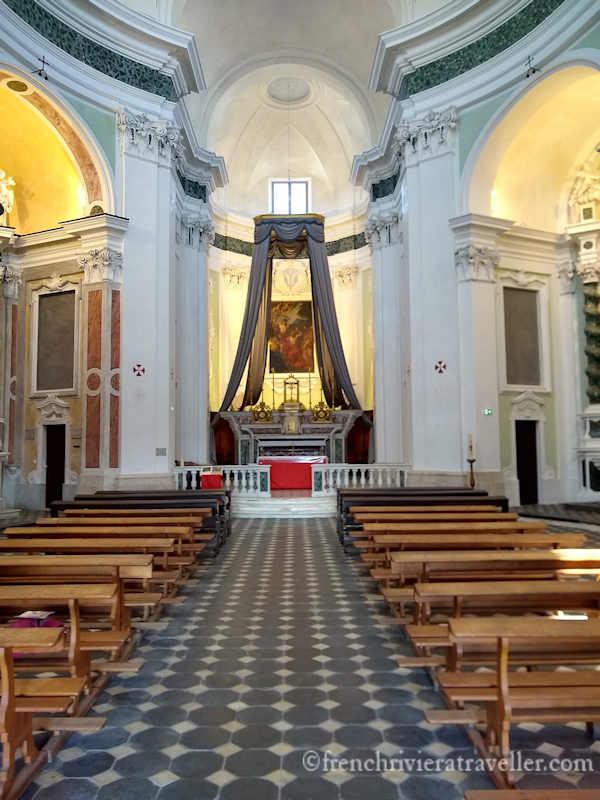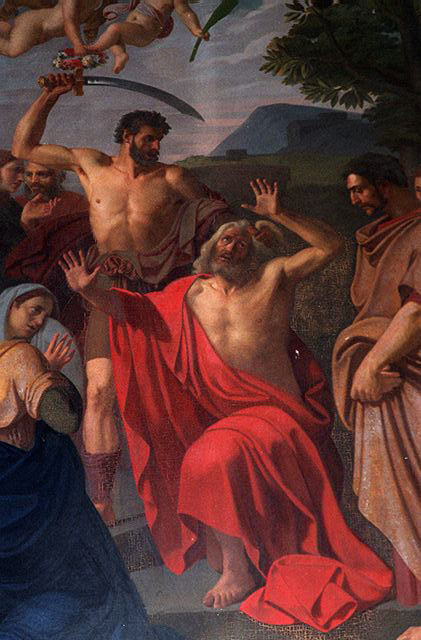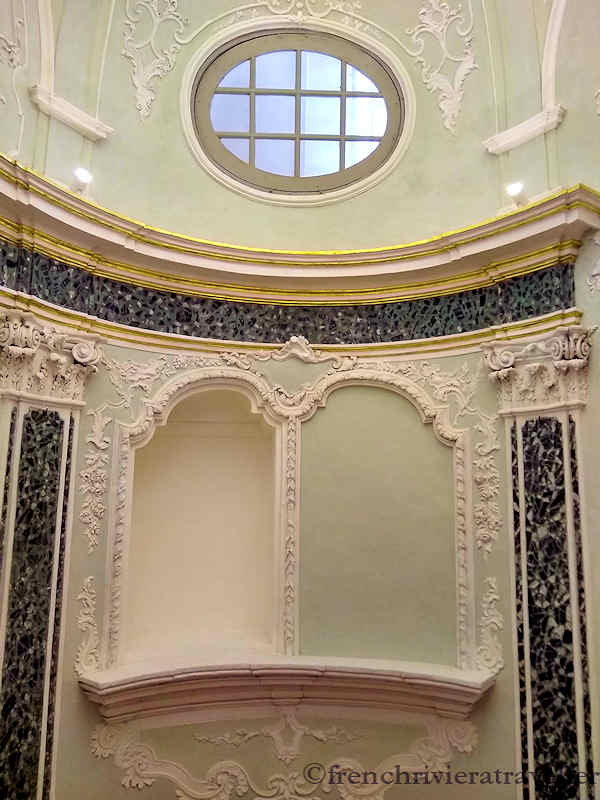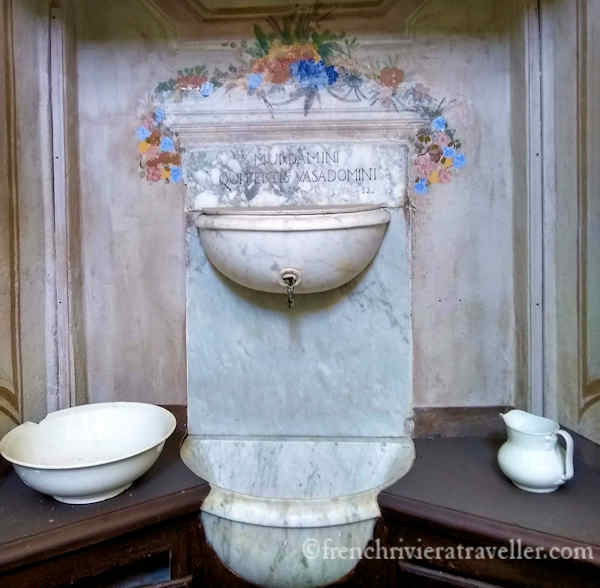The Saint Pons Abbey is one of the oldest abbeys in the south of France and it has recently been restored to its former glory. From the elegant facade to the elaborate interior, the abbey church represents the best of Nice's baroque architecture. It is now a Historic Monument.

The story of the abbey begins with Saint Pons, the son of a Roman senator who lived in the third century. Pontius (Frenchified to "Pons") was an early convert to Christianity. As Christians were ruthlessly persecuted, he moved from Italy to the Roman settlement, Cemenelum, now Cimiez.
It did not work out well. Pontius was captured and thrown into the amphitheatre of Cimiez to be eaten by bears. According to legend, the bears refused to attack him. His persecutors attempted to burn him at the stake but he remained immune from the flames. Finally the Romans chopped his head off and threw his body off a cliff. Supposedly, his head rolled into the Paillon river and was carried to Marseilles. He was Nice's first Christian martyr.
See more on the history of Nice
The first abbey was built in the eighth century on his burial site. It was Charlemagne, France's first Christian emporer, who decided to honor Pons by constructing a tomb. Fragments of that early tomb are preserved in the first chapel on the west inside the church. Around the same time a Benedictine abbey arose around the sacred spot.
Although destroyed in a Saracen attack in the 10th century, the abbey was quickly rebuilt once the invaders were repelled.
Thanks to a series of generous bequests, the abbey grew rich in the early middle ages. The abbot wielded political power and many of the monks fanned out to establish their own churches throughout the region. Occupying a strategic position outside Nice's town walls, the abbey was the perfect place to bring warring rulers together. In 1388 the agreement placing Nice in the hands of Savoy was signed at the abbey.
Alas, the abbey's good fortune was not to last. Power and money corrupt and the Benedictines were no exception. As their popularity and their fortune seeped away, the Benedictines were forced to sell their possessions. One of the most valuable was the church at the top of Cimiez hill which they sold to the Franciscans in the 16th century. The final nail in the coffin was when Pope Pius VI ended the order in 1792. The remaining property was transferred to Nice's royal house, King Victor Amadeus III, King of Sardinia.
After the departure of the Benedictines, the abbey struggled to fit within the religious life of Nice. In 1807 a small seminary was installed to instruct future clergy in the French language. In 1835 the bishop of Nice installed missionaries from the Oblates of Mary order who undertook renovations of the abbey buildings until their departure in 1903. The abbey became state property in 1860 and in 1908 the monastery was used as a quarantine for those afflicted with contagious diseases. It later became part of Pasteur Hospital. Meanwhile, the abbey church fell into ruin. After a costly, 10-year restoration, the church opened to the public in 2019.
The first stone for the new church was laid on 21 March 1725, Saint Benedict's name day and was finished in 1743. Notice the unusual convex shape which echoes other churches in Liguria.
Although two bell-towers were planned, only one was built. Its bell tower, adorned with pilasters attenuating the angles, is surmounted by a bulb resting on a small cylindrical openwork storey.A portico forming a terrace, supported by a series of semicircular arches, allows communication with the convent buildings and amplifies the horizontal development of the first level. It contrasts with the vertical momentum of the facade. A horseshoe staircase made up of a calade allowed access to it.
Although the staircase calade (embedded pebbles) no longer exists, the entrance to the church still displays the embedded pebbles.
The interior is elliptical and envelopes the visitor immediately upon entering.

To the right is a painting of the Cruxifiction that resembles the work of Louis Brea. The lateral chapels are decorated with twisted columns.

Go behind the main altar to see a painting attributed to the Nice painter, Joseph Castel, which represents the martyrdom of Saint Pons.

Behind the first chapel on the west is the entrance to an exquisite crypt that contains the relics of Saint Pons.

Also on the left side is the entrance to the sacristy with lovely baroque touches.

Adjacent to the church is the original abbey that housed the Benedictine monks along with a cloister. It is now the psychiatric wing of Pasteur Hospital and is not open to the public.
The abbey is open for public visits 2.30-4.30pm Monday to Friday. Entrance is free.
The abbey is only steps away from the Hopital Pasteur stop on tramway line 2 and bus 8. It's easy to see the abbey from the tram and bus stops. Go past the Amphitheatre Le Galet conference hall and climb the metal stairs to the church.
See more on getting around Nice
Related Pages
|